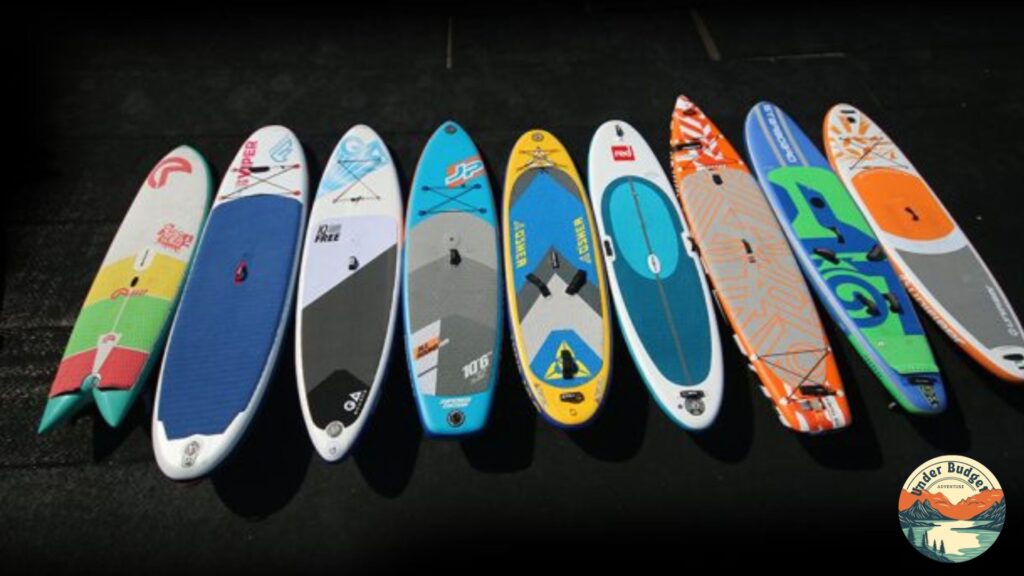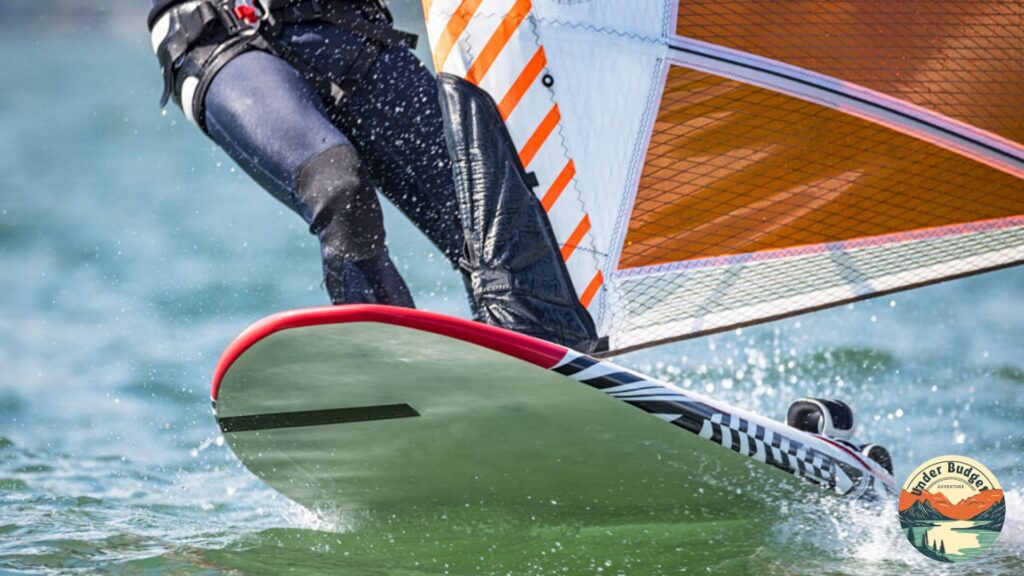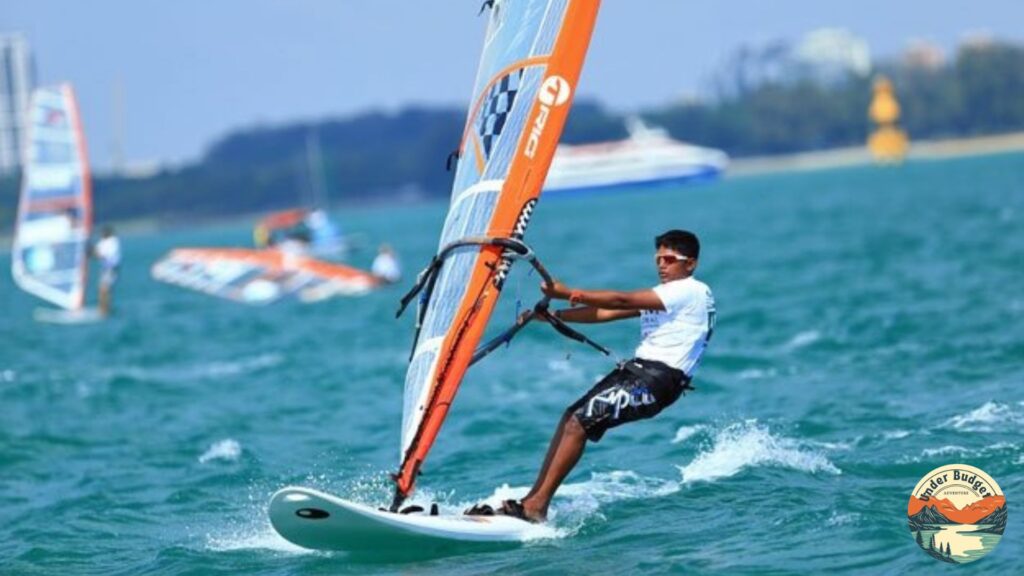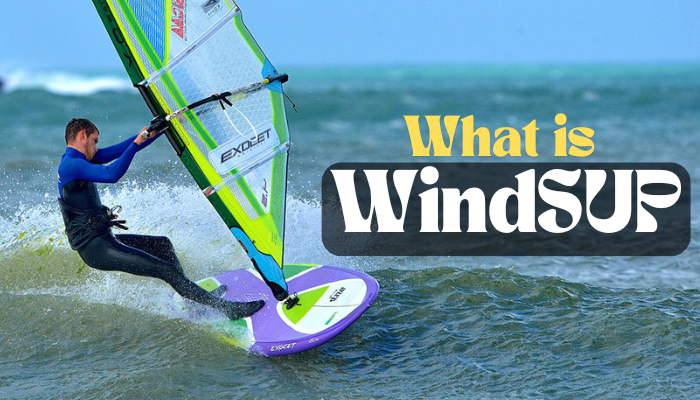WindSUP is an exciting combination of windsurfing and Stand-Up Paddleboarding (SUP) that opens up a whole new world of fun on the water. Imagine gliding across the surface with a paddle in hand, but when the wind picks up, you can effortlessly switch gears and use a sail for that thrilling rush. This hybrid sport offers enthusiasts more options than ever before, allowing them to enjoy different experiences without needing multiple boards or complicated setups.
What makes WindSUP particularly appealing is its versatility. Beginners can start by paddling calmly while gaining confidence, then gradually learn to harness the wind’s power as they become more experienced. It’s perfect for those who love both the physical challenge of paddling and the adrenaline boost from sailing.
Are WindSUP Boards Fun?
WindSUP boards offer a thrilling blend of windsurfing and stand-up paddleboarding, making them an exciting option for water enthusiasts. Imagine gliding across the water with the wind at your back, using a large 10-meter rig that catches even gentle breezes. With a little practice, you can harness wind speeds of around 10 mph, feeling like you’re flying over the surface while maintaining control with your paddle. This unique experience opens up more options for adventure seekers who love both paddling and riding the wind.
You can switch from paddling to sailing in seconds, exploring calm coves or catching waves when conditions are right. Plus, it’s suitable for all skill levels—whether you’re new to watersports or an experienced rider looking for something different. As you navigate through varying winds and waters, each session becomes an opportunity to develop new skills and discover different areas of your favorite lake or ocean spot.
What Makes A Good WindSUP Board?
A good WindSUP board stands out because of its unique blend of qualities. First and foremost, it should be long, wide, and stable. This design allows for easy balance while paddling or windsurfing, making it perfect for beginners or those looking to enjoy a relaxing day on the water. A wider board offers more surface area, which helps prevent tipping and provides a comfortable platform for riders to feel at ease.
The best WindSUP boards can easily switch from paddle boarding to windsurfing without needing extensive adjustments. This means you can enjoy calm days on the water with just a paddle or catch some wind when conditions are right. Additionally, lightweight materials enhance maneuverability, making it easier for users to transport their boards and handle them in different water situations.
Windsup Board Length

When choosing a good WindSUP board, length plays a crucial role in its performance. Most quality boards tend to be 12 feet or longer and boast a volume of 200 liters or more. This size allows for better stability when you’re out on the water, making it easier to learn and have fun. Longer boards glide through the waves effortlessly, meaning they can reach higher speeds with less effort.
Think about how powerboats need big engines to achieve great speed; similarly, in windsurfing and stand-up paddleboarding, longer boards offer smoother rides thanks to their design. For instance, models like the Kona One showcase this concept beautifully—they provide a very smooth transition from paddling to windsurfing.
Windsup Board Volume
When choosing a WindSUP board, understanding volume is crucial for an enjoyable experience on the water. Boards with over 200 liters of volume can easily support almost any adult, providing ample buoyancy for stability and balance. This volume level is especially beneficial for beginners or heavier riders who may need extra support to keep afloat while they learn to navigate the wind and waves.
For those weighing 180 to 220 pounds, boards with at least 150 liters will typically float adequately. However, if you want extra confidence as you harness power from the wind, leaning towards a board above this threshold allows for greater maneuverability and less worry about sinking. Selecting the right volume that matches your weight and skill level will make it easier to catch more waves and enjoy longer sessions without fatigue.
Fins and Daggerboards
Fins and daggerboards are crucial in how both stand-up paddle (SUP) boards and windsurf boards navigate the water. While SUP boards typically rely on fins to enhance stability and maneuverability, windsurf boards often feature a centerboard or daggerboard. This design allows for better control when sailing against the wind. Unlike fins, which help steer and track while paddling, a retractable daggerboard can be popped down for extra lift during windy conditions or pulled up to reduce drag in calmer waters.
What’s fascinating is how these components influence your riding experience. Having a removable centerboard means that you can easily adjust your board’s performance based on conditions. For instance, if you’re in shallow waters or want more speed, removing the board could provide enhanced agility. Conversely, using a daggerboard may make navigating through gusty winds easier because it stabilizes the board and keeps it from sliding sideways.
Mast Mount

The mast mount of windsurf boards plays a crucial role in performance and stability. A well-designed fixture is needed on the board to securely hold the sail, allowing sailors to harness the wind effectively. Recent innovations emphasize the integration of a metal track embedded within the board itself, making it easier for users to adjust their sail positions quickly. This not only enhances maneuverability but also provides a more responsive sailing experience.
Their focus on durability and ease of use sets modern mast mounts apart. The embedded tracks minimize wear and tear, reducing maintenance challenges that traditional mounts often face. As enthusiasts dive into different wind conditions, having a reliable system means they can concentrate on perfecting their technique rather than worrying about equipment failure.
How Easy Is SUP? Stand Up Paddle Boarding
Many people find that stand-up paddle boarding (SUP) is pretty easy for most adults to stand on the board. With a little practice, you’ll quickly discover your balance and gain confidence in maintaining your stance. The boards are wider and more stable than they used to be, making it easier for beginners to feel secure as they glide across calm waters. Plus, the gentle rhythm of paddling can be quite relaxing, adding to the enjoyment of being outdoors.
What sets SUP apart from other water sports is its accessibility. You don’t need prior experience or special skills—just curiosity and basic safety awareness.
How Easy Is Windsurfing?

Windsurfing today is more accessible than ever, thanks to modern equipment like the long and wide high-volume WindSUP boards. These boards, such as the Kona One, are designed to offer extra stability and buoyancy. This means you can focus on mastering the basics without worrying about falling off constantly. With their larger surface area, these boards make it easier for beginners to catch the wind and move smoothly across the water.
Moreover, learning to windsurf has become a fun experience rather than a daunting one. The combination of wider boards and user-friendly sails helps newcomers gain confidence quickly.
How Do I Learn To Windsurf?
Windsurfing is an exciting water sport that offers a unique blend of sailing and surfing. To start learning, find a calm lake or pond where the waters are gentle. These tranquil settings make it easier to focus on getting comfortable with the basics. You’ll need a big floaty board and a small sail rig, which will help you balance while catching the wind.
Begin by practicing your balance on land before hitting the water. This can build your confidence as you adjust to how the board moves beneath you.
How Windy Does It Need To Be To Use A WindSUP Board For Windsurfing?
When it comes to using a windSUP board for windsurfing, understanding the wind conditions is key. For very light winds, such as those around 5 mph, you might find that your experience is more about balance than speed. At these low speeds, the board can drift aimlessly, making it challenging to catch any real momentum. This is where sticking to at least 5 to 10 mph wind days becomes crucial; it opens up a realm of possibilities for a fun and engaging ride.
Can A WindSUP Board Sail Upwind?
A WindSUP board can indeed sail upwind very well, thanks to its unique design that combines features of both windsurfing and paddle boarding. The wider shape and stability of a WindSUP allow for better balance, making it easier to navigate against the wind. When using a sail, you can harness the wind’s power effectively, enabling you to tilt the board at a proper angle for optimal upwind performance.
Do I Need A Board Leash For A WindSUP Board?
When it comes to using a WindSUP board, the question of whether you need a board leash can be a bit tricky. While many paddlers find leashes helpful for keeping their boards close, the unique design of WindSUP boards complicates things. You cannot wear a leash in the traditional sense because it can easily get tangled up with the sail. Imagine trying to maneuver your board while dealing with ropes and lines—what could have been a fun experience turns into a frustrating struggle.
Instead of relying solely on leashes, consider using other strategies for safety and convenience. For instance, securing your paddle or having an anchor option nearby can help keep your gear in check while you’re enjoying the wind and waves. It might take a little effort to unhook from the sail if you do decide to use some kind of tether system, but planning ahead can make all the difference.
Do I Need To Wear A PFD For SUP And Windsurfing?
When it comes to stand-up paddleboarding (SUP) and windsurfing, safety should always be a top priority. The US Coast Guard categorizes SUPs and windsurfing boards as vessels, meaning certain safety regulations apply. One essential requirement is that you must wear a USCG-approved life jacket or Personal Floatation Device (PFD, Type III). While some may think they can get away without one on calm waters, accidents can happen unexpectedly—even for experienced paddlers and sailors.
Wearing a PFD not only keeps you safe but also provides peace of mind so you can fully enjoy your time on the water. A good life jacket won’t restrict your movements; instead, it allows you to focus on your technique while navigating the waves or catching the breeze with your sail.
Is An Inflatable Or Rigid WindSUP Board Better?
When choosing between an inflatable or rigid WindSUP board, it’s important to consider how you plan to use it. Inflatable boards have become popular recently due to their ease of transport and storage. With drop-stitch construction, they offer impressive durability and stability on the water. Brands like Starboard and Fanatic have developed high-quality inflatable models that can compete with rigid boards in performance.
On the other hand, a rigid WindSUP board typically provides better speed and responsiveness. If you’re an experienced rider looking to tackle waves or race against friends, the rigidity makes a noticeable difference.
How Much Does A WindSUP Cost?
When considering a WindSUP, expect to spend between $1,000 and $2,000 for the board itself. The price can vary based on the brand and materials used; high-quality boards designed for both stability and performance are usually pricier. It’s worth investing in a good-quality board if you plan to use it regularly because durable materials will serve you well over time.
In addition to the board, you’ll need a sail rig, which typically costs between $500 and $1,500. This additional expense might seem hefty at first glance but think of it as an investment in your enjoyment on the water.
Where Can I Get WindSUP Equipment?
If you’re looking to get your hands on WindSUP equipment, there are plenty of great options available. First, check out local sports shops that specialize in water sports. Many of these stores carry a variety of WindSUP boards and accessories so you can see the products up close before making a choice. Plus, staff members can give valuable advice to help you select what’s best for your skill level and needs.
Conclusion
In conclusion, WindSUP offers an exciting blend of windsurfing and stand-up paddleboarding, making it accessible for everyone from beginners to seasoned athletes. This unique water sport invites participants to enjoy the serenity of paddling while harnessing the thrilling power of the wind. Imagine gliding across calm waters, feeling both the rush of wind in your sail and the gentle rhythm of paddling underneath you—it’s a perfect balance.
FAQs
What is The Difference Between SUP and Windsurf?
Stand-up paddleboarding (SUP) and windsurfing may both take place on water, but they offer unique experiences. SUP involves standing on a large board and using a paddle to navigate through the water. It’s all about balance and enjoying the serenity of lake.
How to Windsurf Basics?
Windsurfing is an exciting sport that combines aspects of surfing and sailing. To get started, you’ll need a few essential pieces of equipment: a board, a sail, and a mast.
Why do people do windsurfing?
Windsurfing draws people in for many reasons, offering a unique blend of excitement and freedom. The thrill of gliding across the water, powered only by the wind, gives swimmers and surfers a chance to experience nature in a completely different way.

